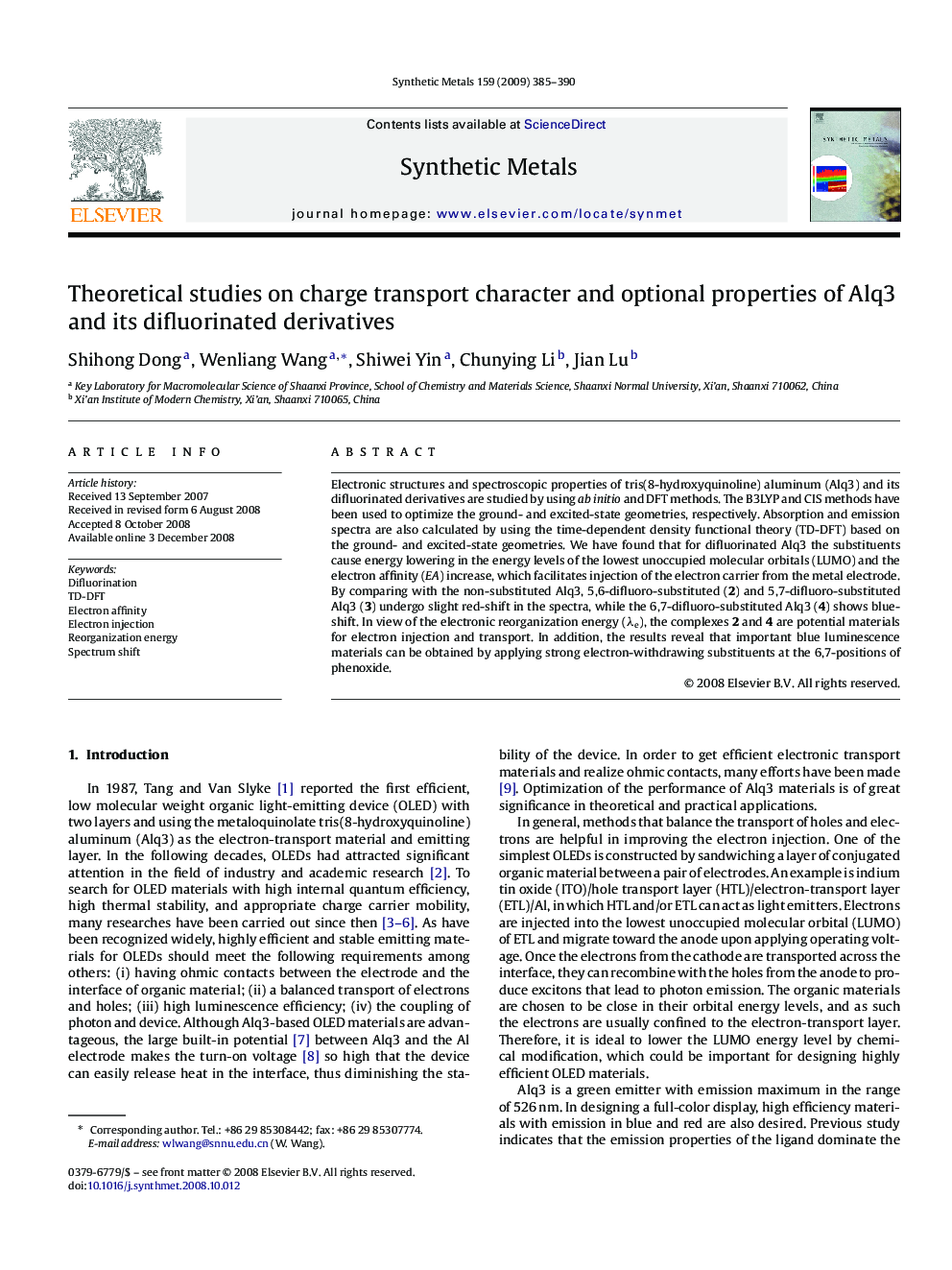| Article ID | Journal | Published Year | Pages | File Type |
|---|---|---|---|---|
| 1443470 | Synthetic Metals | 2009 | 6 Pages |
Electronic structures and spectroscopic properties of tris(8-hydroxyquinoline) aluminum (Alq3) and its difluorinated derivatives are studied by using ab initio and DFT methods. The B3LYP and CIS methods have been used to optimize the ground- and excited-state geometries, respectively. Absorption and emission spectra are also calculated by using the time-dependent density functional theory (TD-DFT) based on the ground- and excited-state geometries. We have found that for difluorinated Alq3 the substituents cause energy lowering in the energy levels of the lowest unoccupied molecular orbitals (LUMO) and the electron affinity (EA) increase, which facilitates injection of the electron carrier from the metal electrode. By comparing with the non-substituted Alq3, 5,6-difluoro-substituted (2) and 5,7-difluoro-substituted Alq3 (3) undergo slight red-shift in the spectra, while the 6,7-difluoro-substituted Alq3 (4) shows blue-shift. In view of the electronic reorganization energy (λe), the complexes 2 and 4 are potential materials for electron injection and transport. In addition, the results reveal that important blue luminescence materials can be obtained by applying strong electron-withdrawing substituents at the 6,7-positions of phenoxide.
Graphical abstractThe emission and absorption electronic spectra of Alq3 and its difluorinated derivatives are calculated by using time-dependent density functional theory (TD-DFT) methods. The results provide insights on obtaining important blue luminescence materials by attaching strong electron-withdrawing difluoro-substituents at the 6,7-positions of the phenoxide group.Figure optionsDownload full-size imageDownload as PowerPoint slide
